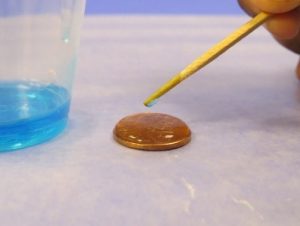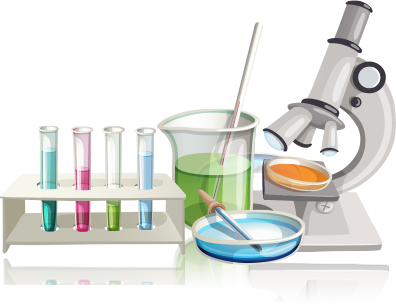The surface of water is stronger than you might think. If placed gently enough, some things that would normally sink can stay up on top! Try the activity and see how strong the surface of water can be!
Here's what to do:
- Try placing a paper clip on the water as shown. Does it sink or stay up?
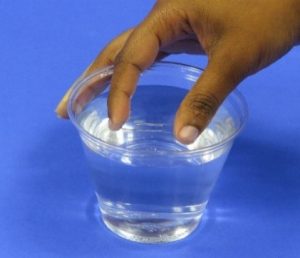
- Unbend a paper clip into a “U” shape. This is your "grabber."
- Squeeze the grabber and put the ends inside another paper clip to pick it up as shown below.
- Very carefully place the paper clip on the surface of the water and squeeze the grabber to let the paper clip rest on the water's surface. Keep trying until it stays on the surface of the water.
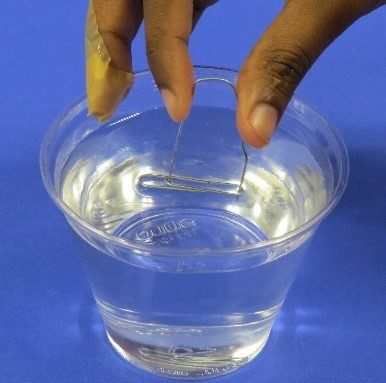
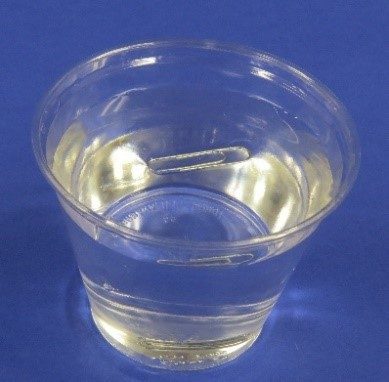
- From the side, look very closely at the paper clip resting on the surface of the water. Describe how the surface of the water looks around the paper clip.
- Dip a toothpick in a little detergent and then touch the detergent to the water. What happens?
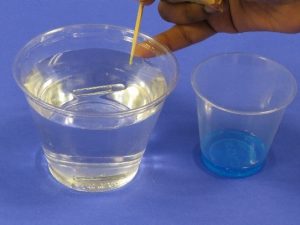
What to expect
If you are very careful, and put the paper clip on the surface of the water very gently, it should stay on the surface. If you look from the side, it looks like the paper clip is making a dent in the surface but not breaking through.
What's happening in there?
A paper clip, which sinks in water, can be placed on the surface of water in such a way that it doesn't sink. This is because water has the ability to stick to itself and form a kind of strong and flexible "skin" on its surface. The paper clip sits on this surface. The detergent keeps the water from sticking to itself which breaks up the "skin," causing the paper clip to sink.
What else could you try?
Try making a giant drop on a penny and seeing if detergent makes your drop drop.
Be safe
Be sure to review the safety instructions on page 1 before proceeding.
Here's what to do:
- Place a clean dry penny on a flat surface like a desk or table. Use a dropper to add drops one-at-a-time to the penny and count the drops.
- As you count, look at the growing drop of water from the side and predict how many drops you can add before the water overflows. How high is the drop compared to the thickness of the penny?
- How many drops were you able to add before the water spilled? Was your prediction low, high, or right on the money?
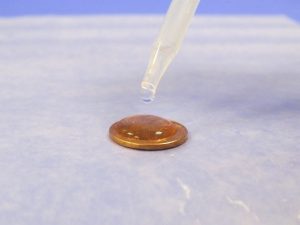
What to expect
The water will pile up on the penny until it is high above the surface of the penny.
What's happening in there?
The drop on top of the penny was able to grow and grow because water sticks to itself. The outside surface held the drop together until the drop got so large and heavy that the surface could no longer hold the drop's shape.
What do you think would happen if you touched the top of the water drop with a little detergent? Dry off the penny, stack some more water on it, and give it a try!
